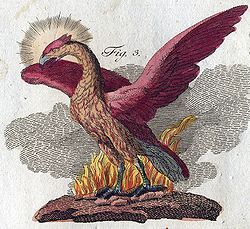This isn't the first time that a sex scandal has hit an American yoga community hard. Regardless of how the current Anusara controversy plays out, it's a good time to go back and re-read Chapter 16 of Stephen Cope's classic, (1999). (Or, if you've never read it, buy it and read it cover-to-cover! If you have any interest in yoga, it's one of the best contemporary works out there.)
In the book, Cope describes how Kripalu imploded after finding out that its guru-teacher-leader, Amrit Desai, had been secretly having multiple extra-marital affairs for years. The wonderful thing about the story, however, is that it explains how the community eventually emerged stronger and wiser because of the scandal; newly dedicated to and organized around meaningful democratic principles.

|
| Kripalu today (http://www.kripalu.org/article/656) |
Cope, a practicing psychologist, astutely describes the deeper psychological roots of the scandal:
Among the hundreds of people of all ages, races, and religions who have been residents at Kripalu, I can safely say that almost all came seeking some version of the idealized family. In the guru and in the community at Kripalu, thousands of seekers sought the perfect Dad and Mom . . . (they) bring a tremendous amount of idealization and projection in their relationships with teachers. We fall in love with our teachers, and with our communities, and as a result we do not see them at all clearly.As the idealized love driven by unconscious desires projected at them grows, Cope explains, it's easy for teachers who aren't yet ready to handle this wave of adulation to become sucked into these powerful psychological dynamics:
If the teacher is not aware of his own unresolved needs to be admired, highly praised, and adored, he or she may being to believe the idealizations of his students. An air of unreality begins to infuse the entire situation . . . Teacher and student grow further and further from an understanding of their complicated unconscious motivations. It is only a matter of time before the situation collapses of its own weight.When the guru was exposed, all hell broke loose. Of course, as a live-in ashram, it was impossible to keep things quiet and contained when events including "shouting, screaming, and what sounded like furniture flying" were there for all to hear. ("'You fucked him. For years. You fucked him. Don't tell me you didn't!' The entire building stopped breathing in that instant.")
Did the community then draw on their yogic resources, start taking deep breaths again, tap into their inner peace, step out of their "mis-alignment," and gracefully forgive? Well . . . there was a bit more to the process than that.
Within days, the guru and his entire family were gone. Press releases were written, forthrightly declaring the details of the scandal . . . Standing in the naked truth was difficult to bear, but we were doing it . . . We were standing in the best traditions of yoga. We had learned something. This was good.
But the bonfire did not stop there. There were legal maneuverings. Lawyers' bills mounting into the millions. Challenges from former residents. New allegations of sexual misconduct . . . The guru's throne was smashed to smithereens in the main chapel. The flames raged on . . .
Over the course of the next years, the community would go through a complete death and rebirth. Many of the senior members would leave . . . most did well. The more vulnerable remained deeply wounded by from the betrayal and death of the idealized family. The entire organization was restructured, from the board down.
. . . With several years, signs of rebirth were in the ascendent. But the dream had to die, the guru had to leave, and the idealization had to be irreparably broken.Cope goes on to explain that the success and failure of Kripalu were inextricably interrelated:
It was not the scandal that forced the death of the old forms of yoga at Kripalu. Quite the opposite. It was the impending death of the old paradigm that required the scandal. It is clear that the fact of Amrit Desai's affairs had been in the unconscious of the community all along. It was not new information. Quite a few individuals held the secret. It was simply information that could not be brought to the light of consciousness until the community was more or less ready for it.
In 1994 when the scandal erupted, Gurudev had not suddenly changed. In fact, the sexual misconduct was by that time many years old. Amirt was who he had always been -- ambitious, brilliant, sometimes a sincere yogi, sometimes just a smooth performer, too often a teacher who was too charming for his own good. It was the community's own capacity to see and bear the truth that had changed.
The bonfire was just as much a sign of success as of failure.
I visited Kripalu back in the mid-2000s and loved it. It is beautiful, and has a clean, clear, positive vibe. Of course, it's not perfect. But the organization does offer tons of valuable teachings to tens of thousands of people each year.
I felt blessed to have visited; it's a memory I still cherish today.




What an excellent post. Thank you very much.
ReplyWow. This is just beautiful work on a key subject - post and comments. I think that the yoga teacher is in a role that may be more demanding than we at first realize. Many will expect - and not unfairly, perhaps - that the yoga teacher not only talk the talk but also walk the walk. Speaking for myself, this can be a heavy load. We have a tendency in our society to go to extremes. It seems at times that only the superlative is fully valued. And if we take the yogic ideal of the Yoga Sutras or the Gita to be the expected achievement of our teachers, then we are really getting far ahead of ourselves. Adulation has to be a head-turning situation for the recipient, and potentially corrupting. I don't know that that is what happened to Amrit Desai, but I can easily see how his elevation might have resulted in a loss of oxygen to his brain which led to lapses in judgment.
ReplyAs Carol says, it is possible to have the wisdom to handle these things. But imho we don't much value wisdom in our culture. We'd rather have fame. The spiritual practice of yoga may seem at odds with our materialistic culture. But not from yoga's point of view. That's what yoga is for. It's there to help us loosen the bindings of our sense-centered selves.
Kripalu has done a wonderful job of working through its miseries. And credit for that must be given to Swami Kripalu and his teachings. He taught love, and he taught that objective self-observation is a very high form of practice. By examining our practice of yoga and our teacher/student relationships and our own assumptions and expectations - as we are now doing - we are engaging in a deep practice of yoga.
This is really good. Thank you.
freaking awesome thoughts on forgiveness. Which is ultimately the more important question. The scandal is silly, the egos are silly, the abuser or guru is shock value. But what about the people who have been hurt? What does forgiveness mean, in any manipulative situation? Is healing actual, or just a wishy washy 'getting over it'?
ReplyKripalu stands as a powerful example of how real healing can be. But that it isn't easy (take deep breaths, re-align, recenter is NOT enough). Honesty needs to happen, new lines have to be drawn, integrity has to be restored. Not easy.
But possible. Stronger at the broken places is real.
Which is what most of us wanted to learn in our yoga practice in the first place.
glad to know of this bit of history, it is important!
Replythanks carol
very interesting post, thankyou
ReplyFascinating. Wonder what would have happened had the Kripalu unraveling occurred in the era of Facebook?
ReplyI lived in the ashram from 1974 through 1981. I can tell you that the sexual energy was very high for all of us who lived there, but we channeled it into seva (work) and practices. The fact that I practiced brahmacharya better than Amrit makes me smile. Despite the overt adulation, in which I wholeheartedly participated, there were many good solid teachings from which I benefited. My life is infinitely better for having met Amrit and lived and worked in his ashram. It took me a long time to forgive him. After all, he's just like my birth father. Too funny really that I would have two powerful, charismatic men in my life who meant so much to me -- and they were both philanderers. My karma I guess.
Reply